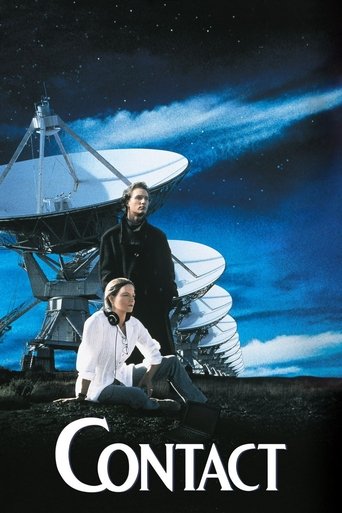
Apple Pie (2016)
Shot on 16mm celluloid across parts of New Zealand and Samoa, interdisciplinary artist Sam Hamilton’s ten-part experimental magnum opus makes thought-provoking connections between life on Earth and the cosmos, and, ultimately, art and science. Structured around the ten most significant celestial bodies of the Milky Way, Apple Pie’s inquiry begins with the furthest point in our solar system, Pluto, as a lens back towards our home planet and the ‘mechanisms by which certain aspects of scientific knowledge are digested, appropriated and subsequently manifest within the general human complex’. Christopher Francis Schiel’s dry, functional narration brings a network of ideas about our existence into focus, while Hamilton’s visual tableaux, as an extension of his multifaceted practice, veer imaginatively between psychedelic imagery and performance art.
Rating: 2/10 by 1 users
Alternative Title:
Country:
New Zealand
Samoa
United States of America
Language:
English
Runtime: 01 hour 20 minutes
Budget: $0
Revenue: $0
Plot Keyword: experiment, new zealand, art house, performance art, art, art gallery, cosmology, astronomy, contemporary art, essay film, critical theory, complexity
Oregon Public Radio/ NPR. Sam Hamilton Brings His Films And More To PAM’s APEX Gallery The fresh face at Portland Art Museum is Grace Kook-Anderson, the new curator of Northwest art. It’s her job to make sure the museum reflects regional work, but she also has a strong feel for contemporary art. And that is reflected in her first choice for the Museum’s APEX Gallery: fellow recent Northwest transplant Sam Hamilton, whose playful interdisciplinary work interweaves films, music and installation. Who else would mix Carl Sagan, David Attenborough and Kenny G in one show? https://www.opb.org/radio/programs/stateofwonder/segment/solange-sould-out-chuck-close-pendleton/
https://www.60inchcenter.com/home/2017/8/18/sam-hamilton-standard-candles Manufacturing Connections between All Living Things with Sam Hamilton’s Standard Candles Standard Candles, a multimedia exhibition by Sam Hamilton, explores the nature of time, sound, composition and relativity, transporting viewers into a visual and auditory space not quite of this era or dimension. Hamilton’s pieces exhibited in Standard Candles are a fusion of many contemporary art forms, combining film and video, sculpture, visual storytelling, sound, montage, and performance art, engendering an exhibit that requires multi-sensory and multi-dimensional involvement. Through continuous loops and montage style video pieces created using manual film (super 8 and 16mm), and sculptures made to look like vinyl albums, Hamilton’s exhibition seems at first glance to be a collection of adjoining rooms filled with random, unrelated pieces. When reviewed more closely, Hamilton’s exhibit seems to be asking us all to be critical of our “objective assumptions of order and time”, as well as our notions of measuring humanity and likeness (Dykstra, 2017). The pieces in this exhibition work together in a way that transcends the limitations of exhibition design and connects to viewers in a variety of ways, be it sound, memories, dreams, or notions of physically connecting with the natural world. Hamilton asks us to find a collective purpose in seemingly standalone things, while providing us a variety of avenues to explore these connections. Hamilton’s piece, David Attenborough Presents: The History of Evolution / The Evolution of History (2012), a short 2:21 film, depicts Hamilton himself, strangely holding a large stack of heavy books, using them one by one to create a pathway into the distance. Before the last book hits the ground, the loop stops and begins again, resulting in an unsettling feeling due to the perpetual, looping notion of incompleteness. This piece is the first visible when stepping into exhibition, so viewers that feel the need for closure after viewing this loop may continue on to find resolution throughout the remainder of the exhibit. The most time-consuming piece for Hamilton in Standard Candles was derived from Carl Sagan’s famous quote, “If you wish to make an apple pie from scratch, you must first invent the universe”. Apple Pie (2016) is a full length feature made up of ten short films (Pluto, Sun, Mercury, Venus, Earth, Moon, Mars, Jupiter, Saturn, and Neptune) (Dykstra, 2017), where Hamilton playfully sought to satisfy Sagan’s heavy demands for making an apple pie. Nearly an hour and a half in duration, this collection of short films fuses aesthetics from early 3D-style digital animation to avant garde contemporary video clips that could have been made any time in between 1980 and today. Looking past the unusual array of costumes (ranging from dreamlike feature-less rainbow suits to culturally-symbolic attire) and predicaments framed in this film, Apple Pie hints at the interconnectedness between all living things through diverse aesthetic, auditory, and compositional implications. The fragmented collage-style composition used in Apple Pie is jarring at first, though with continued viewing becomes more cohesive and sensible. Each short film tells a story of its own that ties into the whole, quite like how the individual pieces of Standard Candles have significance both individually and as a series. Hamilton’s exhibit is laid out sparsely and across multiple spaces, making it difficult to pair pieces that could have functioned more successfully together with closer proximity or greater visual association. Regardless of the easily-overlooked connections between Hamilton’s works, the perplexity of each piece encourages deep consideration about their implications and meaning. Because of the lack of consistency in exhibiting his video work (some were projected from floor to near-ceiling while others were displayed on mid-sized flat screen televisions), and the sparse placement of his relatively small album sculptures found on either sides of otherwise blank walls, focus was not drawn to any particular piece, likely to remark on the importance of the exhibition as a whole, and the lack of importance of cohesive display. While Standard Candles could have been more successfully designed in layout and composition, the integrity of Sam Hamilton’s work cannot simply be disintegrated by imperfect presentation. His use of grainy, flickering film provides a beautiful and unique 1970’s-esque component to his video work that is not easily (or successfully) replicated through today’s digital formats. Hamilton’s multi-methodical storytelling approach offers viewers a variety of ways to experience his work, through documentary, silent, loop and montage film, and handmade sculptures of old albums, each method used to explore different ways in which we interact with and understand the world. His pieces embody peculiar scenarios, ones that seem vaguely familiar yet impossible in the real world. While the comfort of familiarity inspires an immediate connection between viewer and piece, Hamilton introduces a sense of discomfort through techniques like masking facial features, connecting a living, standing body to a tree with cloth, and tossing books in a line like stepping stones. These videos, picturing arbitrary scenes, make a point: that humans connect to things and each other in an infinite amount of ways, whether they have had an alike experience, dream, thought or fear igniting that connection. Hamilton’s work uses these sensory triggers to stimulate these associations and establish meaning that is personal and unique for all who experience his exhibition. The result is a meaningful reflection of the human experience, and a wordless commentary that everything that surrounds us is relevant and connected.






















